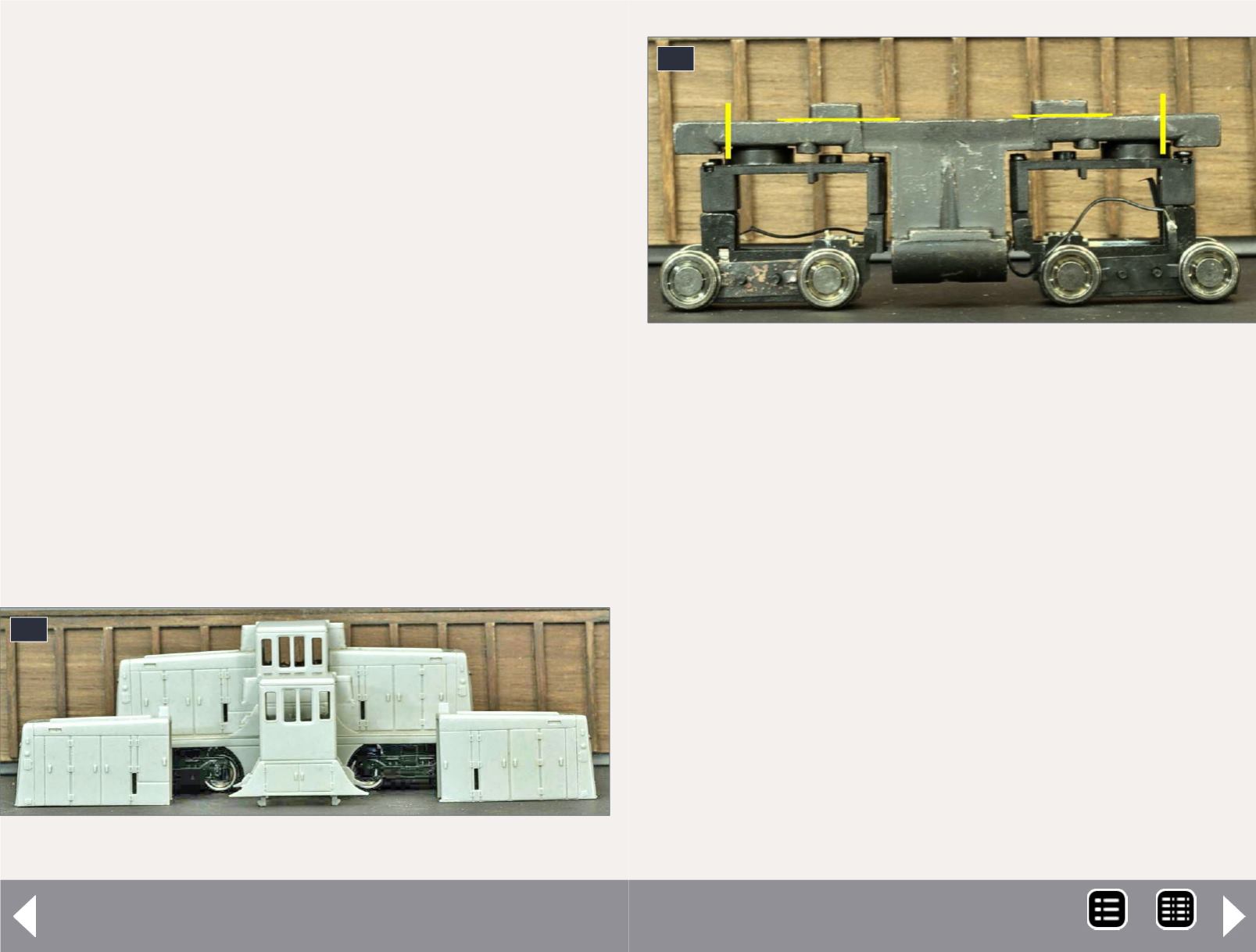
necessity and desperation inspired yet another approach. I had
been working on a model waterfront pier, and realized that the
piling reinforcement often found with hemp rope might work
here. I had a spool of very fine, strong thread on hand, and
decided that pilings and axle gears are close enough!
After removing and cleaning the gear, I verified that the crack
had not progressed to the center of the gear. The axle gears
are made of a slippery plastic, much like Delrin which typically
does not glue well at all. I applied a thin coat of CA glue sur-
rounding the end of each side of the gear and wound several
turns of thread through the glue. It is imperative that you make
this as thin and strong as possible, as clearances in the motor
truck are tight. So far, the reassembled trucks have worked
fine and the crack did not progress to the gears.
Considering that power might be at a premium in this loco,
other variations were tried to reduce the current draw. First,
the motor and truck gears were removed completely, leaving
only the two freely turning axles in one truck. This obviously
reduced the tractive force available, but also halved the total
power. On another truck I removed the intermediary gears
17. Bachmann 44-ton switcher, in sections.
17
Battery-powered models - 8
between the directly driven axle and the other axle. Again
some power was saved at the expense of traction. I also used
Northwest Short Line’s (NWSL) geared replacement wheel sets
as another alternative. All worked, but ultimately I found that
two fully geared motored trucks could easily be driven by bat-
tery power.
The boxcab loco is built with the body of an old Roundhouse/
MDC locomotive also available as a track cleaner, powered and
non-powered. Its lower mounting “ears” are cut off. These bod-
ies are no longer in production but are readily available in swap
meets and on eBay.
As mentioned above, the chassis and drive motors are from
an old dual motor Bachmann GE 44-ton switcher. The body is
removed and cut down to the walkways [17]. The wiring board
is removed and the top of the metal chassis is shortened as
much as possible [18]. The top metal protrusions are removed.
The metal chassis is used to support the power trucks and
18. Bachmann 44-ton switcher, chassis cuts.
18
MRH-Nov 2014


